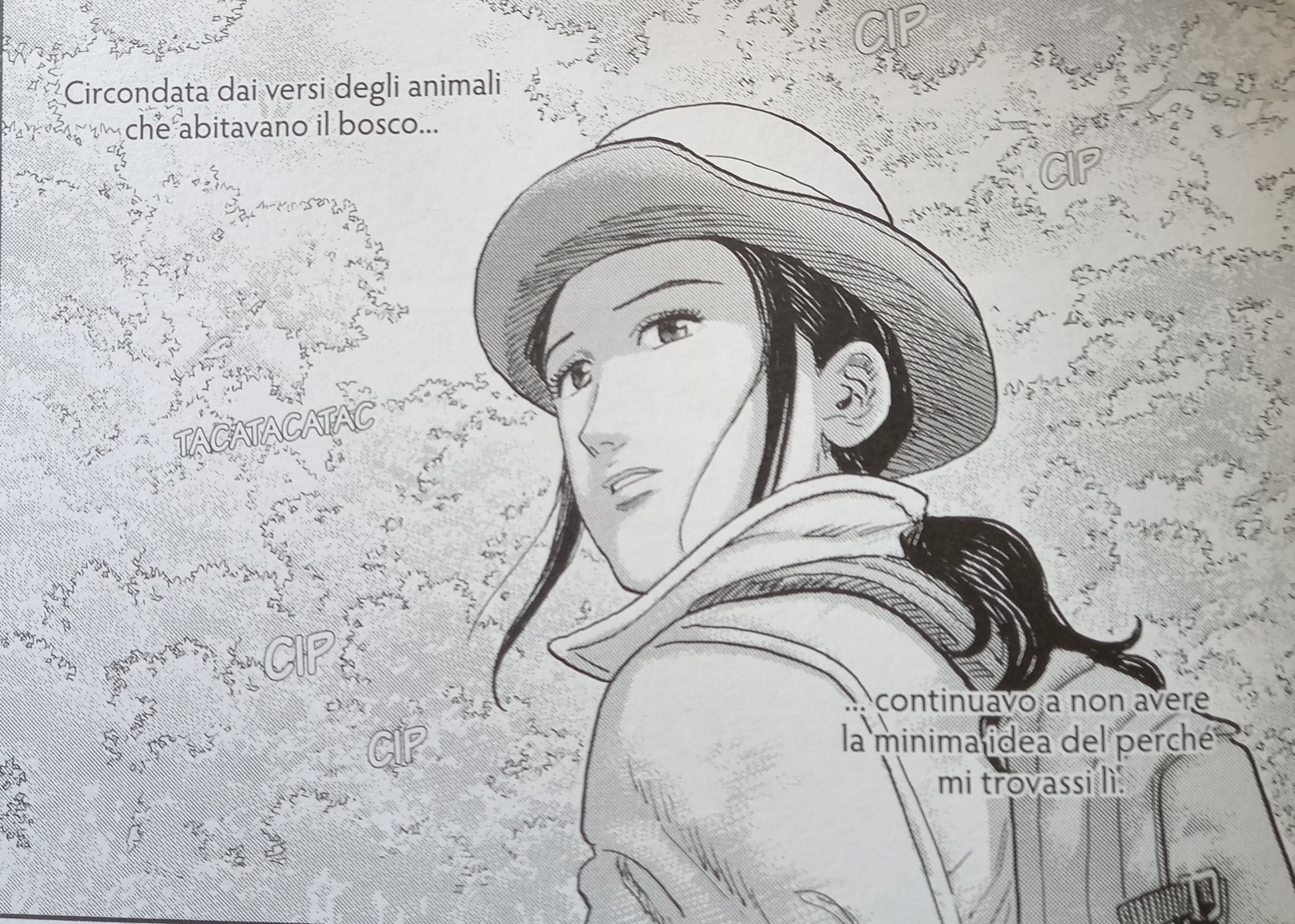AdolesSsence.

Above, Tsukiko Omachi in a sequence from ‘Gli anni dolci’ Vol.1, by Jirō Taniguchi[1] (2010, RCS Libri Spa) on the novel by Hiromi Kawakami.
It is a very traditional fable, but played in that rebel frame able to seduce because you inspire a scent, a really intriguing essence : the essence of an adolescence, legal assent to an ‘I-would-but-maybe-not’, of a passing to adults which provokes and annoys, thin purple veins in the dazzling pink of Tokyo’s blooms, one cannot easily tear oneself away from beauty. And the other, as a matter of fact, will never enter Tsukiko’s appointments. Jirō Taniguchi manages very well to make visual that falling in love with oneself which the novel explains in detail : the greatness of a mangaka[2] also lies in his, or her rare ability to know how to publish, without necessarily assent, a law which others have approved.
Matsumoto Harutsuna is an attentive observer and of memory, focused on mathematics and fond of literature, a quiet and reasonable man, so un-samurai. But for Tsukiko Omachi he remained ‘the teacher’ whose name she doesn’t remember, the man who could pass or fail in high school, an immovable signifier in the traditional boss-victim pairing, a resonance now useless but formally emancipated : and, above all, he was married.
What is needed then is a will, imaginative although preordained, to the absence of will, so that she – however always punctual according to the clock - can finally remove the other she encounters, without encountering him at all. She is already fully autonomous, except for aesthetics.
Marina Bilotta Membretti / Cernusco sul Naviglio – April 22, 2024
[1] Jirō Taniguchi (1947-2017) : devoted to comics since a child, he decides to make it his profession and moves to Tokyo, his first work is ‘Kurorohorumu’ (1970). In 1971 he wins the coveted competition announced annually by the publisher ‘Shogakukan’ with ‘Tōi koe ’ and in 1975 he begins publishing his first series ‘Namae no nai dobutsutachi’. Notable are his collaborations with famous writers : Natsuo Sekikawa, Caribu Marley, Shiro Tosaki, Ryuichiro Utsumi, Baku Yumemakura and up to Hiromi Kawakami. His competence to write stories, of which he is also the author, establishes his artistic and communicative maturity : in 1986 he publishes ‘Blanca’, then ‘Aruku hito’ (1990), ‘Harukana machi-e’ (1998) and a great number of other works. In 1992 he wins the ‘Shogakukan’ award again with ‘Inu o kau’ and many subsequent awards. Deeply interested in European comics and able to grapple in very different environments, Taniguchi matures his own realistic and minimal style that makes him appreciated even abroad, where he obtains important recognitions.
[2] ‘Mangaka’ in the Japanese languages indicates a professionist author of comics.

